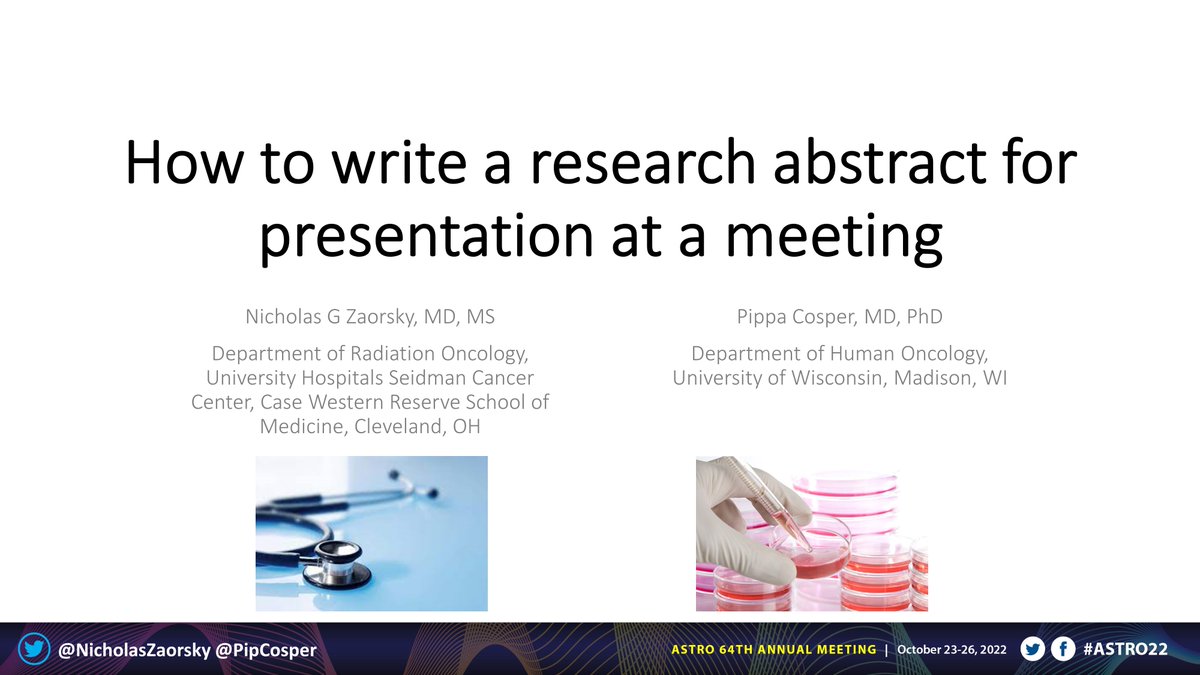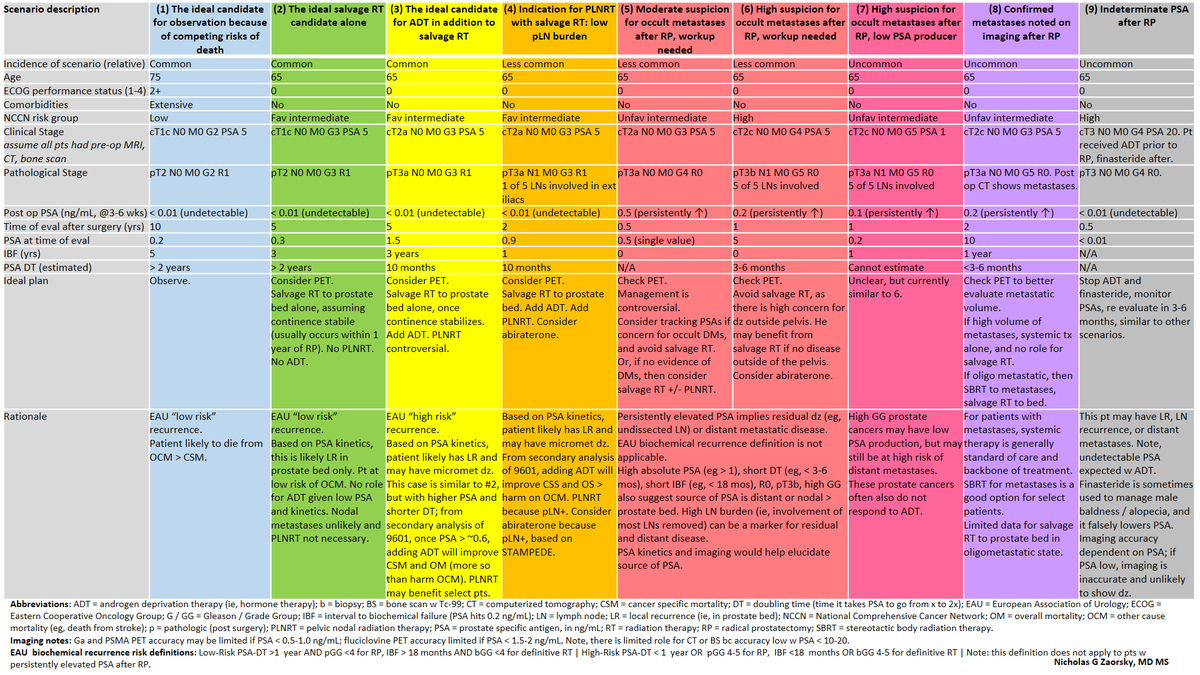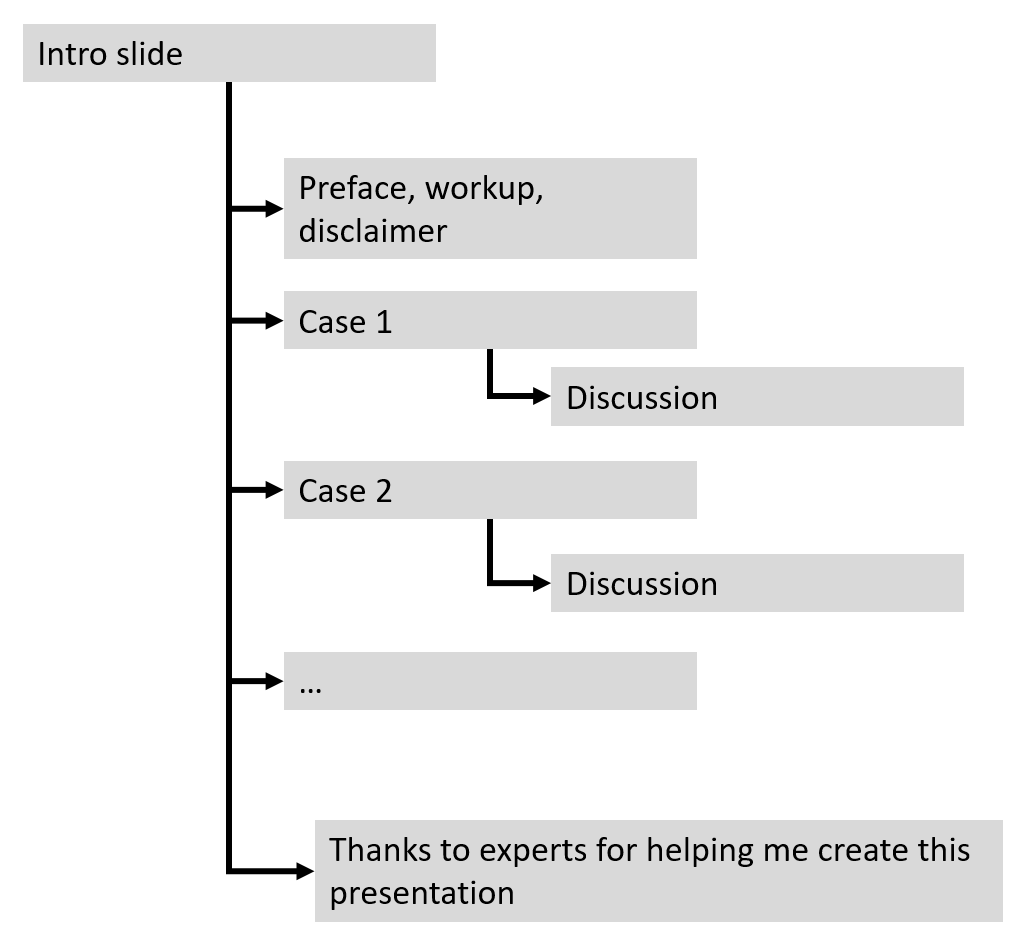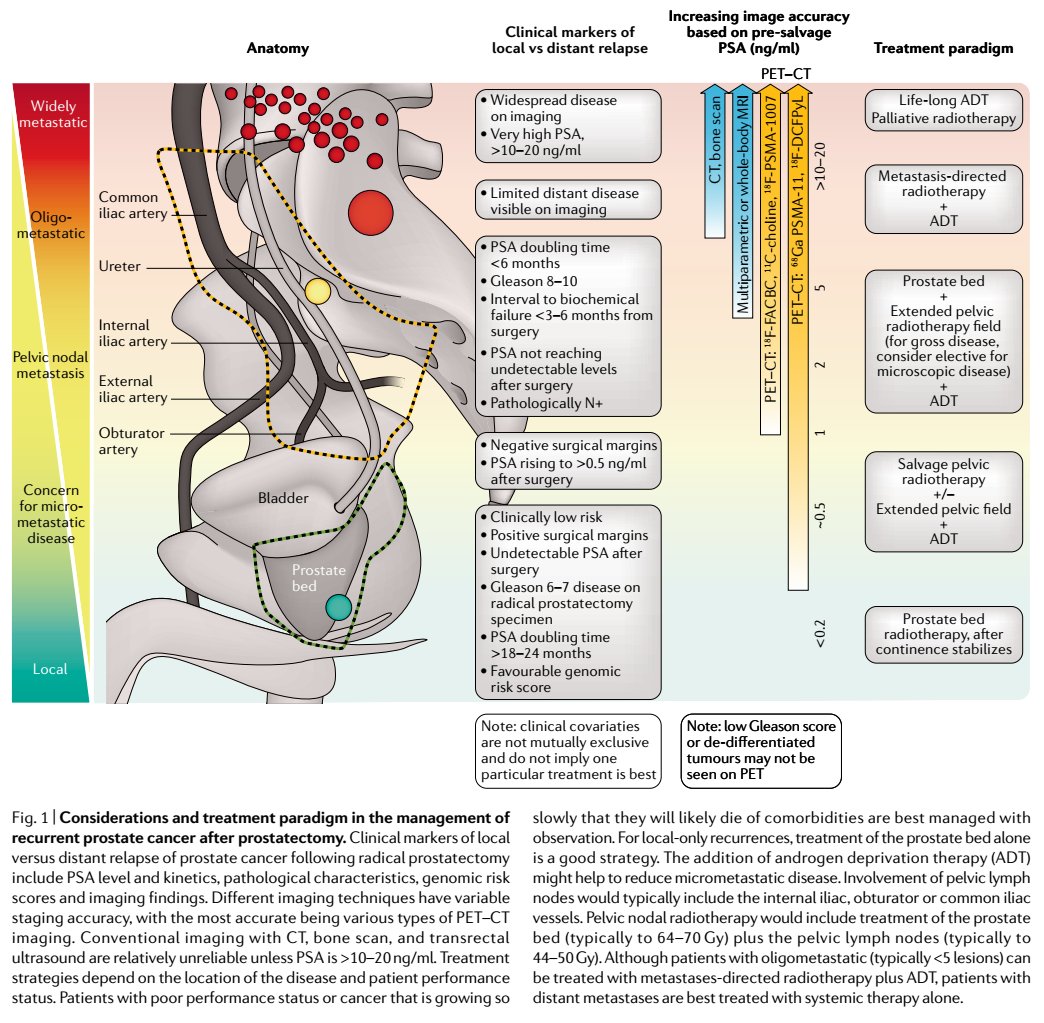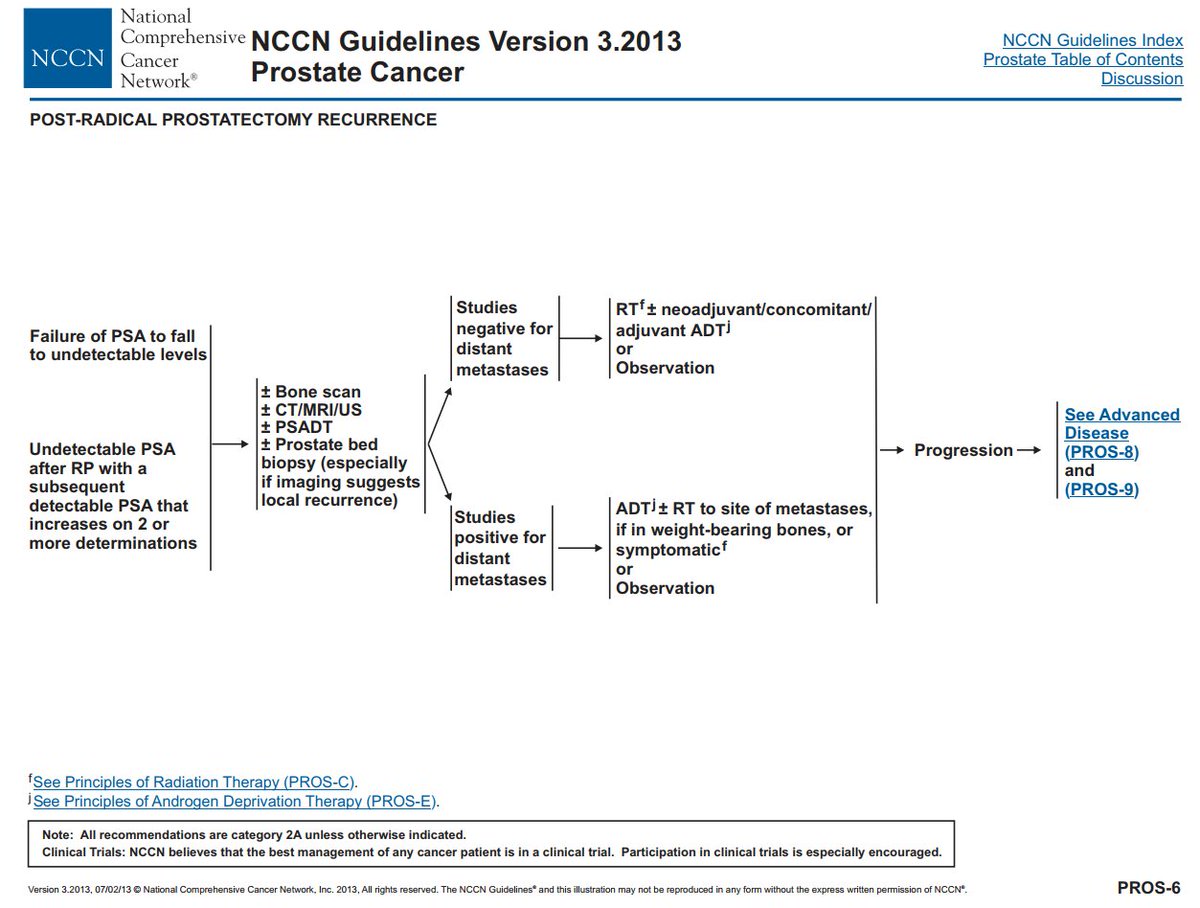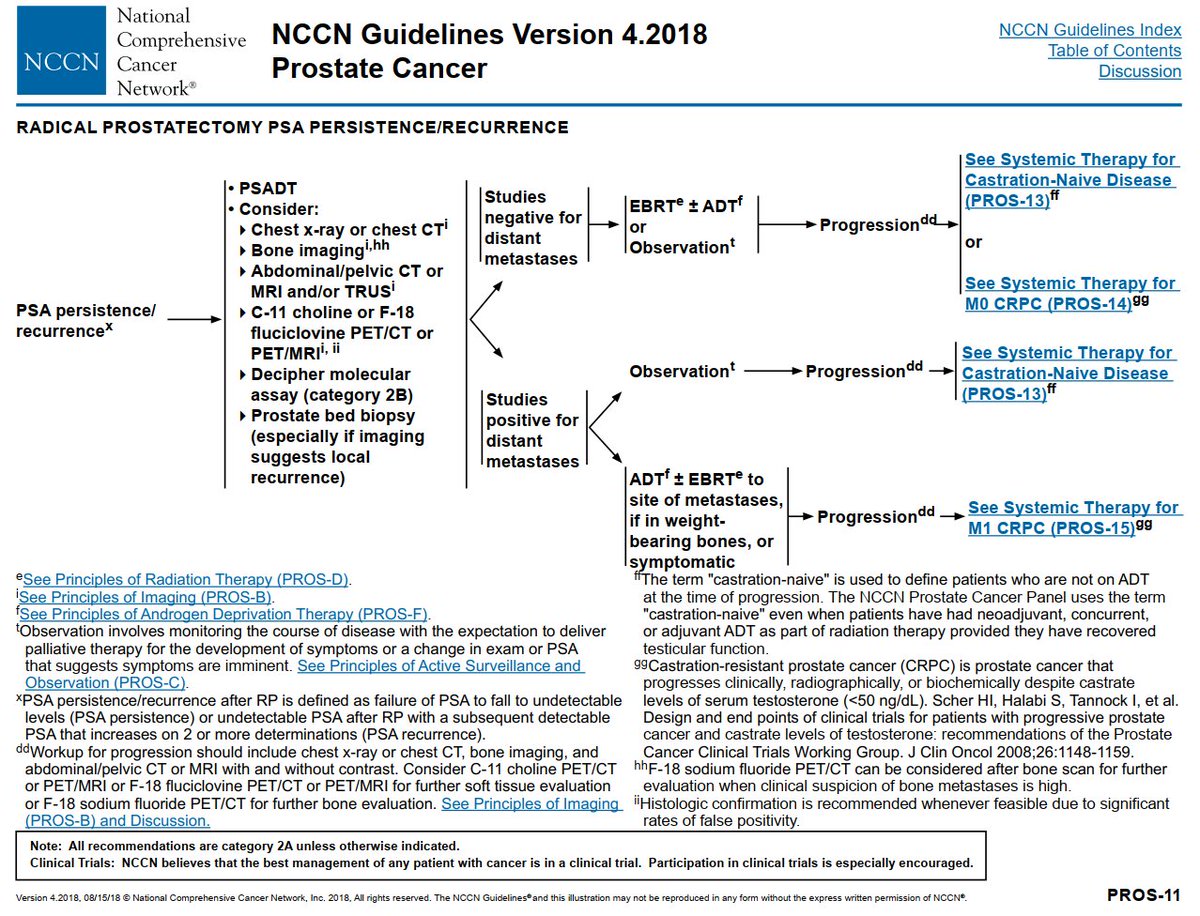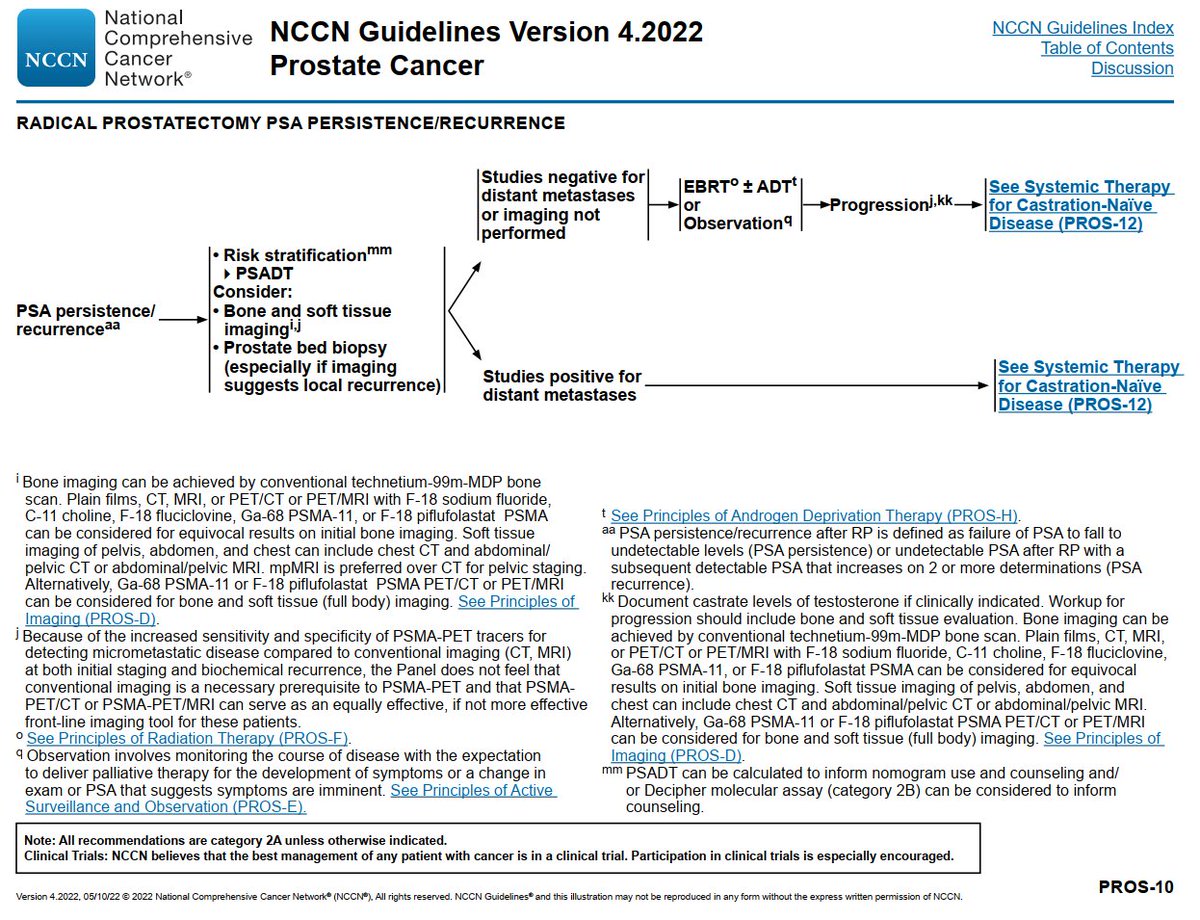Guide to writing a medical research manuscript
bit.ly/ZaorskyManuscr…
Here is advice after writing, reading, and reviewing 1000+ manuscripts.
#MedTwitter
bit.ly/ZaorskyManuscr…
Here is advice after writing, reading, and reviewing 1000+ manuscripts.
#MedTwitter

Why do we do medical research?
There are at least two problems with medicine:
(1) in 100 years, half of it will be proven to be false;
(2) we don’t know which half.
There are at least two problems with medicine:
(1) in 100 years, half of it will be proven to be false;
(2) we don’t know which half.
Success in our research career depends on these 3 pillars.
Thanks to @freddyeescorcia for the slide.
Thanks to @freddyeescorcia for the slide.

How do you choose a good project?
I like to create a prospectus/synopsis and then circulate it to a core group of knowledgeable authors before proceeding.
>80% of works will stop at this stage.
@DrSpratticus @DanTrifMD @EricLehrer @_ShankarSiva @DrAlexLouie @TimShowalter1

I like to create a prospectus/synopsis and then circulate it to a core group of knowledgeable authors before proceeding.
>80% of works will stop at this stage.
@DrSpratticus @DanTrifMD @EricLehrer @_ShankarSiva @DrAlexLouie @TimShowalter1


Acknowledging your idea is not the best and cutting loss early is key. You will find another project.
It is not worth your time to pursue a bad idea.
We had some success w the prospectus above, it was recently presented at @ASTRO_org
It is not worth your time to pursue a bad idea.
We had some success w the prospectus above, it was recently presented at @ASTRO_org
https://twitter.com/NicholasZaorsky/status/1452394325917175812
Here are the types of research projects I see most often. For medical students and residents, retrospective case series and review articles are the easiest to do. 

What are the characteristics of a good research mentor?
Pubmed/google your potential mentor. You want to see them as senior author and mentees as the first authors.
@DrSpratticus and I agree w @simonsinek: leaders eat last. Mentees should always go first.
Pubmed/google your potential mentor. You want to see them as senior author and mentees as the first authors.
@DrSpratticus and I agree w @simonsinek: leaders eat last. Mentees should always go first.
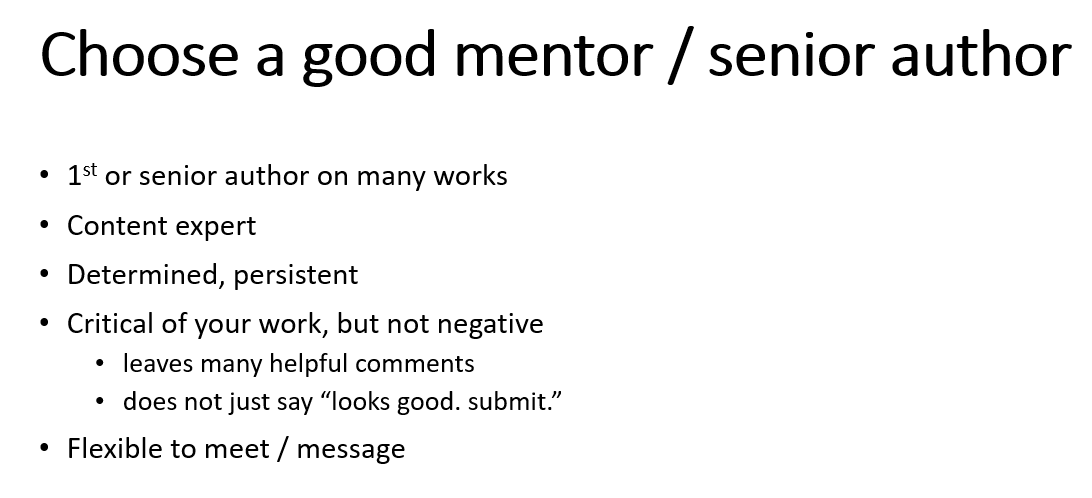
In contrast, a poor mentor can derail a research career. Mentorship malpractice happens in academics frequently.
jamanetwork.com/journals/jama/…
jamanetwork.com/journals/jama/…

How do you find where you will submit your paper. The impact factor is a surrogate of journal quality, but it's imperfect.
Specialty specific journals usually have an IF ~3-7, and you can still have a great research career publishing there.


Specialty specific journals usually have an IF ~3-7, and you can still have a great research career publishing there.



In academics, publications are a currency for funding, promotion, tenure, career advancement.
https://twitter.com/nicholaszaorsky/status/1227314532579717120
How do you write the actual manuscript?
I see manuscript writing like writing a haiku.
You have a ton of information that needs to be condensed into as few words as possible.
Each manuscript has a few key sections:
I see manuscript writing like writing a haiku.
You have a ton of information that needs to be condensed into as few words as possible.
Each manuscript has a few key sections:

Although the manuscript is divided into those sections when publishing, the sections are written in a different order. 

Tables, figures, results are the most important part of any paper.
No one is reading your paper for the discussion or intro.
No one is reading your paper for the discussion or intro.

When our group writes papers, we think of what the tables and figures will look like.
Prepare and share the files (eg via @Dropbox).
Create spreadsheets for easy analysis by expert biostats team. Make your files easy to open in SAS, R, Stata.
@wedney2017 @holly7holly


Prepare and share the files (eg via @Dropbox).
Create spreadsheets for easy analysis by expert biostats team. Make your files easy to open in SAS, R, Stata.
@wedney2017 @holly7holly



OK, you have some data back from biostats team. It's time to write it up. 😃
The hardest part of working out is getting to the gym.
The hardest part of writing a manuscript or grant is opening Microsoft Word.
Here are some tips/tricks w Word:
The hardest part of working out is getting to the gym.
The hardest part of writing a manuscript or grant is opening Microsoft Word.
Here are some tips/tricks w Word:

Headings.
Go to View, Navigation Panel.
Look in the left panel.
Each of these headings is a section.
If you click on any heading, you will be taken to that section instantly.
Go to View, Navigation Panel.
Look in the left panel.
Each of these headings is a section.
If you click on any heading, you will be taken to that section instantly.

Page breaks.
Insert page breaks between sections so it is easier for reviewers to read your paper later.
Reviewers are humans who are reading your paper after a busy day of clinic. If they can't easily find core components of your manuscript, they will reject it.
Insert page breaks between sections so it is easier for reviewers to read your paper later.
Reviewers are humans who are reading your paper after a busy day of clinic. If they can't easily find core components of your manuscript, they will reject it.
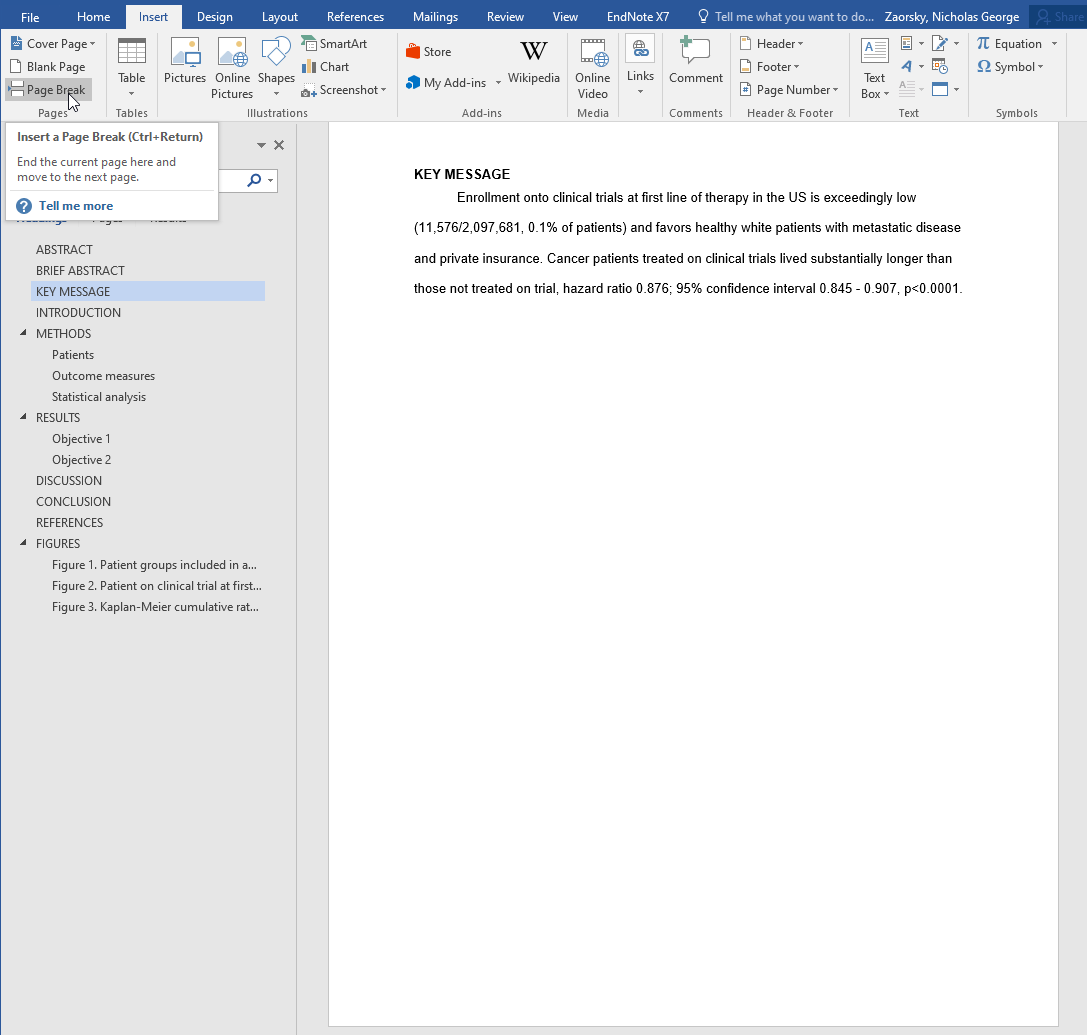
Quick access toolbar.
You can put all of your favorite commands in here, and then you won't have to search for them.
I like the symbol button, EndNote functions, subscript/superscript, etc.

You can put all of your favorite commands in here, and then you won't have to search for them.
I like the symbol button, EndNote functions, subscript/superscript, etc.


Split Window.
Go to View Tab.
Hit Split Window.
Now you have a horizontal divider in your screen.
You can read one part of your paper and then check on other parts (eg, references, tables, figures) while you read the top.
Here we are using the feature to check references.
Go to View Tab.
Hit Split Window.
Now you have a horizontal divider in your screen.
You can read one part of your paper and then check on other parts (eg, references, tables, figures) while you read the top.
Here we are using the feature to check references.

Custom dictionary.
Physicians and scientists know 100,000 esoteric words, but MS Word doesn't recognize them.
Go to Google, type in medical dictionary in a txt file. Download that file. Add that dictionary to MS Word. No more red squiggles.
Physicians and scientists know 100,000 esoteric words, but MS Word doesn't recognize them.
Go to Google, type in medical dictionary in a txt file. Download that file. Add that dictionary to MS Word. No more red squiggles.

Auto recover save file location.
Tired of losing your files?
Save the auto recover location to your Dropbox on all of your computers.
You can then recover any file from any of your computers.
Dropbox has an additional feature of keeping temp files for months.
Tired of losing your files?
Save the auto recover location to your Dropbox on all of your computers.
You can then recover any file from any of your computers.
Dropbox has an additional feature of keeping temp files for months.

By default in tables, there is padding in each cell.
Right click the arrow sign.
Go to Table Properties.
Go to Options.
Make the margins 0".
Now you can squeeze in all of your data.

Right click the arrow sign.
Go to Table Properties.
Go to Options.
Make the margins 0".
Now you can squeeze in all of your data.


The Layout tab has a lot of other good features: merging, splitting, inserting, etc.
You can add these to the Quick Access Toolbar.
You can add these to the Quick Access Toolbar.

Save your manuscript as a template for your next work so you don't have to re invent the wheel every time you want to do a research project.
EndNote could be a separate tweetorial.
I would watch some YouTube videos on it. Here are some of my favorite features.


I would watch some YouTube videos on it. Here are some of my favorite features.



I use FoxIt PDF reader, it is better than Adobe.
You can convert to and from Word docs, sign PDFs, search folders of PDFs on your computer for a specific word.
@foxitsoftware
foxit.com


You can convert to and from Word docs, sign PDFs, search folders of PDFs on your computer for a specific word.
@foxitsoftware
foxit.com



Use Greenshot for screenshots and image captures.
getgreenshot.org
Clinicians: this is awesome for PACS and patient notes.
getgreenshot.org
Clinicians: this is awesome for PACS and patient notes.

Password managers like @Bitwarden and @LastPass will make it so you don't have to remember your passwords for journals.
Although, I still always have errors logging in to Editorial Manager websites 😅
Although, I still always have errors logging in to Editorial Manager websites 😅

How do you find literature related to your manuscript or topic?
scholar.google.com will find literature and sort by combination of date of publication, citations, access.
These are the papers you want to integrate in your manuscript.
scholar.google.com will find literature and sort by combination of date of publication, citations, access.
These are the papers you want to integrate in your manuscript.

PubMed is good too, but it will not sort by relevance.
However, there is a plugin by Kopernio (now owned by EndNote) that will search for the PDF online and let you download it, bypassing paywalls.
However, there is a plugin by Kopernio (now owned by EndNote) that will search for the PDF online and let you download it, bypassing paywalls.

Figures.
Figures are a surrogate of the quality of your manuscript.
If you have bad figures with typos, errors, poor colors, bad resolution, it is an easy way to rejection.
Humans like aesthetically pleasing images with intuitive colors.


Figures are a surrogate of the quality of your manuscript.
If you have bad figures with typos, errors, poor colors, bad resolution, it is an easy way to rejection.
Humans like aesthetically pleasing images with intuitive colors.



There are 2 types of figures you can upload to a journal.
Vectors vs rasters.
If you upload a raster, make sure it is high resolution.
Vectors vs rasters.
If you upload a raster, make sure it is high resolution.

Microsoft powerpoint does save as a PDF (a vector file, though you can have embedded JPG rasters), and it also saves as rasters directly. 





However, if you want high resolution JPGs from Powerpoint, you need to change your registry.
This seems complex, but it will only take you 5 minutes, and now your figures will be beautiful.

This seems complex, but it will only take you 5 minutes, and now your figures will be beautiful.


Let's go back and write the intro.
You should be able to adapt this from your prospectus.
Intros have a classic 3-paragraph style:
big problem in medicine
zoom in to the problem, what hasn't been done
what you're going to do in this manuscript
You should be able to adapt this from your prospectus.
Intros have a classic 3-paragraph style:
big problem in medicine
zoom in to the problem, what hasn't been done
what you're going to do in this manuscript

Next, we write the discussion.
The 1st paragraph of the discussion is "the hardest hitting paragraph of the whole paper." @DrAlexLouie
You need to:
summarize big problem, what has been done
write what you did
provide a memorable number or value from your work
The 1st paragraph of the discussion is "the hardest hitting paragraph of the whole paper." @DrAlexLouie
You need to:
summarize big problem, what has been done
write what you did
provide a memorable number or value from your work

The rest of the discussion is similar to editorial or commentary.
How do your results compare to literature?
What is similar or different? Why?
Consider discussing your tables and figures sequentially in this section.
Google Scholar will help you find relevant literature.
How do your results compare to literature?
What is similar or different? Why?
Consider discussing your tables and figures sequentially in this section.
Google Scholar will help you find relevant literature.

Next, we summarize the paper with the conclusion.
Be consistent with what you are concluding throughout the paper.

Be consistent with what you are concluding throughout the paper.


You will scroll to your references next, and they should be done. 😃
Double check them for grammar/syntax errors.
Double check them for grammar/syntax errors.

The abstract is one of the final parts you write.
Take the most important parts of the paper and condense them into as few words as possible.
Take the most important parts of the paper and condense them into as few words as possible.

When you write manuscripts, done is better than perfect.
The default deadline to send the research paper to your mentor, assuming you have all data, is 1-2 weeks.
The default deadline to send the research paper to your mentor, assuming you have all data, is 1-2 weeks.

When you and mentor are happy with it, circulate to the group.
Here is a typical email in our group.
@DrSpratticus @AmarUKishan @DanTrifMD @TimShowalter1 @EricLehrer @_ShankarSiva @DrAlexLouie
If you have huge group, consider BCC.
Here is a typical email in our group.
@DrSpratticus @AmarUKishan @DanTrifMD @TimShowalter1 @EricLehrer @_ShankarSiva @DrAlexLouie
If you have huge group, consider BCC.

Coauthors.
Your mentor should not blindly advocate for coauthors for collegiality or because "they refer pts to us." Similarly, a dept chair should not be coauthor unless they contributed.


Your mentor should not blindly advocate for coauthors for collegiality or because "they refer pts to us." Similarly, a dept chair should not be coauthor unless they contributed.



If the editors think your paper is good for review, they will send it to reviewers.
Reviewers looks at these key sections:
abstract, tables, figures
They ask themselves: would I draw the same conclusion from the data presented?
Reviewers looks at these key sections:
abstract, tables, figures
They ask themselves: would I draw the same conclusion from the data presented?

Publishing takes a long time:
It's hard to find reviewers (which is why you should suggest some)
there are holidays
reviewers don't get paid
there are mixed reviews and more reviews are needed
It's hard to find reviewers (which is why you should suggest some)
there are holidays
reviewers don't get paid
there are mixed reviews and more reviews are needed

Most of my papers get rejected.
I like to think that if I bat 300, eg, if 1/3 of papers are going out for review, then I am on the right track. Eventually, the paper will get in.
Advice from @reshmajagsi
pubmed.ncbi.nlm.nih.gov/23425991/
I like to think that if I bat 300, eg, if 1/3 of papers are going out for review, then I am on the right track. Eventually, the paper will get in.
Advice from @reshmajagsi
pubmed.ncbi.nlm.nih.gov/23425991/

Success is going from failure to failure without losing enthusiasm.
Some general advice.
Your writing environment matters. Find when you are productive and capitalize on that time.
Spend as little time writing as you can. Use the tips/tricks/hacks with MS Word and the other programs to get the job done quickly.
Your writing environment matters. Find when you are productive and capitalize on that time.
Spend as little time writing as you can. Use the tips/tricks/hacks with MS Word and the other programs to get the job done quickly.

If you want to go fast, go alone. If you want to go far, go together.
Ask your colleagues for help and advice.
If they can contribute, invite them as coauthors.
If they talk you out of doing the project for valid concerns, thank them.
Ask your colleagues for help and advice.
If they can contribute, invite them as coauthors.
If they talk you out of doing the project for valid concerns, thank them.
The longer a project takes, the longer it will take.
This is also the PGY-1 adage: the more time you spend working in the hospital, the more time you will spend working in the hospital.
Get your work done ASAP. Do not sit on the data.
This is also the PGY-1 adage: the more time you spend working in the hospital, the more time you will spend working in the hospital.
Get your work done ASAP. Do not sit on the data.
I have spent more time not publishing a manuscript than publishing a manuscript.
Some projects just go fast: get data, write it up, submit it, publish it.
You don't want projects where you have to go back to the database, pull more data, re-analyze, re-write, etc ...
Some projects just go fast: get data, write it up, submit it, publish it.
You don't want projects where you have to go back to the database, pull more data, re-analyze, re-write, etc ...
99% of everything I want to say, someone else has said better, so I use their words.
When writing the intro and discussion sections, I'm paraphrasing brilliant authors from @Nature @JAMA_current @NEJM @JCO_ASCO publications and citing those works directly.
When writing the intro and discussion sections, I'm paraphrasing brilliant authors from @Nature @JAMA_current @NEJM @JCO_ASCO publications and citing those works directly.
Underpromise and overdeliver
Tell you mentor you might have the results written in a few weeks. Then send the whole manuscript in a week.
Tell you mentor you might have the results written in a few weeks. Then send the whole manuscript in a week.
Publishing a manuscript is like doing an H/P for a patient: your first attempt will be poor, but after some practice, you will be able to do it effectively and efficiently.
For this thread, I have to thank amazing mentees and collaborators who have been writing great manuscripts: @SamanthaHorn22 @AlyssaScott563 @StoltzfusKelsey @ChachritK @Raj_Singh_MD @CongzhouSha @LeilaTchelebi @BGreenbergerMD @DianaLinMed @VladAvkshtol @MartinMaMDPhD
@EricLehrer published 50+ articles in the past 2 years, including @JournalCancer @JAMAOnc @JAMA_current @EurUrolOncol
We can't keep track of his awards from @ASTRO_org @RadiumSociety @the_RSS
@ken4englewood @MSROResidents

We can't keep track of his awards from @ASTRO_org @RadiumSociety @the_RSS
@ken4englewood @MSROResidents


How long should you wait before contacting the journal about your paper? 1-2 months is reasonable to send a reminder/check in email.
It is unacceptable for journals to hold on to manuscripts for > 3-4 months.
It is unacceptable for journals to hold on to manuscripts for > 3-4 months.
This is the best case scenario email you will receive.
Revisions are good. You want revisions and lots of comments from the reviewers. If reviewers hated you paper, they would leave a review of a few sentences and then reject it.
Revisions are good. You want revisions and lots of comments from the reviewers. If reviewers hated you paper, they would leave a review of a few sentences and then reject it.

In the response letter, you want to show you made changes that improved the work.
You do not want to:
argue with reviewers
decline to make changes (there are ways around the revision even if you can't make a certain change)
show conflict
provide non sequitur responses
You do not want to:
argue with reviewers
decline to make changes (there are ways around the revision even if you can't make a certain change)
show conflict
provide non sequitur responses

Common criticism #1.
The reviewer wants you to run some experiments or biostats and show some more results. Or maybe you already did it, and they missed it.
This one is easy.
Thank them. Emphasize the results.
The reviewer wants you to run some experiments or biostats and show some more results. Or maybe you already did it, and they missed it.
This one is easy.
Thank them. Emphasize the results.

Common criticism #2.
Reviewer hates some part of your work. It's not your fault. You might even agree with them.
Try to show your agreement. You don't like these data either. You wish the variable could be better. Some other reviewer requested you include it.
Reviewer hates some part of your work. It's not your fault. You might even agree with them.
Try to show your agreement. You don't like these data either. You wish the variable could be better. Some other reviewer requested you include it.

Common criticism #3.
Reviewer wants you to talk about X. But you already talked about it. The reviewer probably missed it.
So, just revise and emphasize it more. Maybe add a line about X in the intro, discussion, conclusion?
Easy fix.
Reviewer wants you to talk about X. But you already talked about it. The reviewer probably missed it.
So, just revise and emphasize it more. Maybe add a line about X in the intro, discussion, conclusion?
Easy fix.

Common criticism #4.
Reviewer wants you to do some crazy biostatistics.
Send comment to your expert biostats team (you should always have at least a MS biostatistician, preferably PhD level).
Your biostats team might make changes or write why it's not reasonable.
Reviewer wants you to do some crazy biostatistics.
Send comment to your expert biostats team (you should always have at least a MS biostatistician, preferably PhD level).
Your biostats team might make changes or write why it's not reasonable.

End of the response letter, thank the reviewers and editors. They're doing this work for free. They want your work to improve, and so do you. 

Here are some common errors throughout the entire manuscript and response letter.
You could circulate your manuscript to friends and family members, who could at least provide some feedback on your grammar/syntax. Family members tend to be blunt with advice. 😅
You could circulate your manuscript to friends and family members, who could at least provide some feedback on your grammar/syntax. Family members tend to be blunt with advice. 😅

If you're a medical student or resident, this is your time to shine in fixing these minor errors.
Similarly, @LeilaTchelebi is a research superstar, writing COVID guidelines for cancer patients w @KarynAGoodman @ldawsonmd, last publication in an IF 500 journal @CAonline
@PottersMD @NorthwellHealth

@PottersMD @NorthwellHealth
https://twitter.com/LeilaTchelebi/status/1468604663616397312
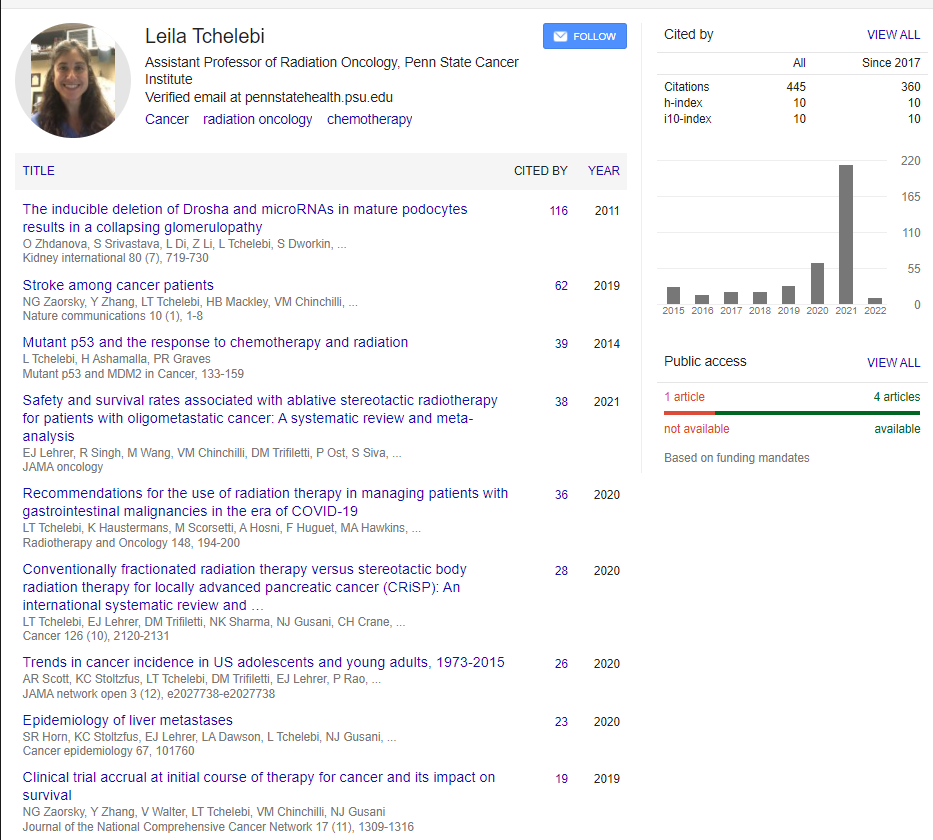
At some point, you will upload all of the files, the website will combine them and "build a PDF" for you to review before you hit submit.
Download this PDF and go through it in detail.
This is a great job for trainees.
Download this PDF and go through it in detail.
This is a great job for trainees.

The built PDF abstract can also remove formatting, so it will be easier to spot grammar/syntax errors. You need to fix these before you submit.
If reviewers see your abstract with errors, they will doubt the quality of your research and reject the manuscript.
If reviewers see your abstract with errors, they will doubt the quality of your research and reject the manuscript.

I asked MD PhD all-star @ChachritK how his @Nature paper is going and he says "which one?" 😅
Lots more coming soon!
@PennStHershey

Lots more coming soon!
@PennStHershey
https://twitter.com/NicholasZaorsky/status/1445769119718985736

Your paper keeps bouncing between journals without review. What do you do now?
Here are some ideas.
Here are some ideas.
1. Reach out to EIC of journal directly w DOC and PPT and ask if they would be interested in reviewing this work. If they say yes, fits w journal's goals, then submit formally, write that you spoke to an editor.
This will save you time of uploading and then getting insta reject.
This will save you time of uploading and then getting insta reject.
2. If this journal has solicited these types of submissions, write it in your cover letter.
Thanks for publishing our work @NatureComms @katieridd
nature.com/articles/s4146…
Thanks for publishing our work @NatureComms @katieridd
https://twitter.com/NicholasZaorsky/status/1254518239243243522
nature.com/articles/s4146…

3. Suggest more peer reviewers, w name, degree, institution, email, expertise.
It is hard for editors to find reviewers.
As editor and reviewer @ASTRO_org IJROBP, @EurUrolOncol, success rate for people agreeing to review is < 50%.
It is hard for editors to find reviewers.
As editor and reviewer @ASTRO_org IJROBP, @EurUrolOncol, success rate for people agreeing to review is < 50%.

4. If this work was previously submitted, revised, but ultimately rejected, consider providing the point by point response letter and your revisions.
It will show the new journal you are actively improving the work.
FYI, most journals forward the reviews anyway.
@GGiannarini
It will show the new journal you are actively improving the work.
FYI, most journals forward the reviews anyway.
@GGiannarini

5. You want to write a high quality review article w international leaders.
Good news, journals want that too.
Contact the EIC with your synopsis and it might become an invited review.


Good news, journals want that too.
Contact the EIC with your synopsis and it might become an invited review.



Thanks for working with us to publish this article,
@NatRevUrol @NetteFenner @rebeccatregunna
@CalaisJeremie @stefanofanti4 @Tilki_De @TDorffOnc @DrSpratticus @AmarUKishan
@NatRevUrol @NetteFenner @rebeccatregunna
@CalaisJeremie @stefanofanti4 @Tilki_De @TDorffOnc @DrSpratticus @AmarUKishan
https://twitter.com/NicholasZaorsky/status/1424729854461755397
6. "I just feel like I can't do scientific writing."
Scientific writing is all about condensing information into as few words as possible.
It is a haiku.
It takes practice, and you can do it!
Scientific writing is all about condensing information into as few words as possible.
It is a haiku.
It takes practice, and you can do it!

7. "The journals keep rejecting us because they say we can't use retrospective data to answer this question."
Eek. Sounds like you are doing retrospective comparative effectiveness research, using "real world data."
Can you do a different project?
Eek. Sounds like you are doing retrospective comparative effectiveness research, using "real world data."
Can you do a different project?
https://twitter.com/NicholasZaorsky/status/1452394325917175812
8. Start a manuscript review group with your colleagues, department, trainees, etc.
People will provide comments on your work, and it will improve. Their works will improve by reading your research. Everyone wins.
@GiannaJoyD @PennStHershey paper almost ready to submit...
People will provide comments on your work, and it will improve. Their works will improve by reading your research. Everyone wins.
@GiannaJoyD @PennStHershey paper almost ready to submit...

It surprises me to see faculty + trainees working on a seemingly clandestine research project where no one else reviewed the prospectus, methods, plans for publication.
Faculty, it's time to drop your insecurities. Let colleagues review the idea. If it's bad, accept it, move on.
Faculty, it's time to drop your insecurities. Let colleagues review the idea. If it's bad, accept it, move on.
9. Create a list/calendar of conferences w submission deadlines for research projects.
Tell your team about deadline many months in advance.
eg, here are meetings accepting oncology research
Tell your team about deadline many months in advance.
eg, here are meetings accepting oncology research
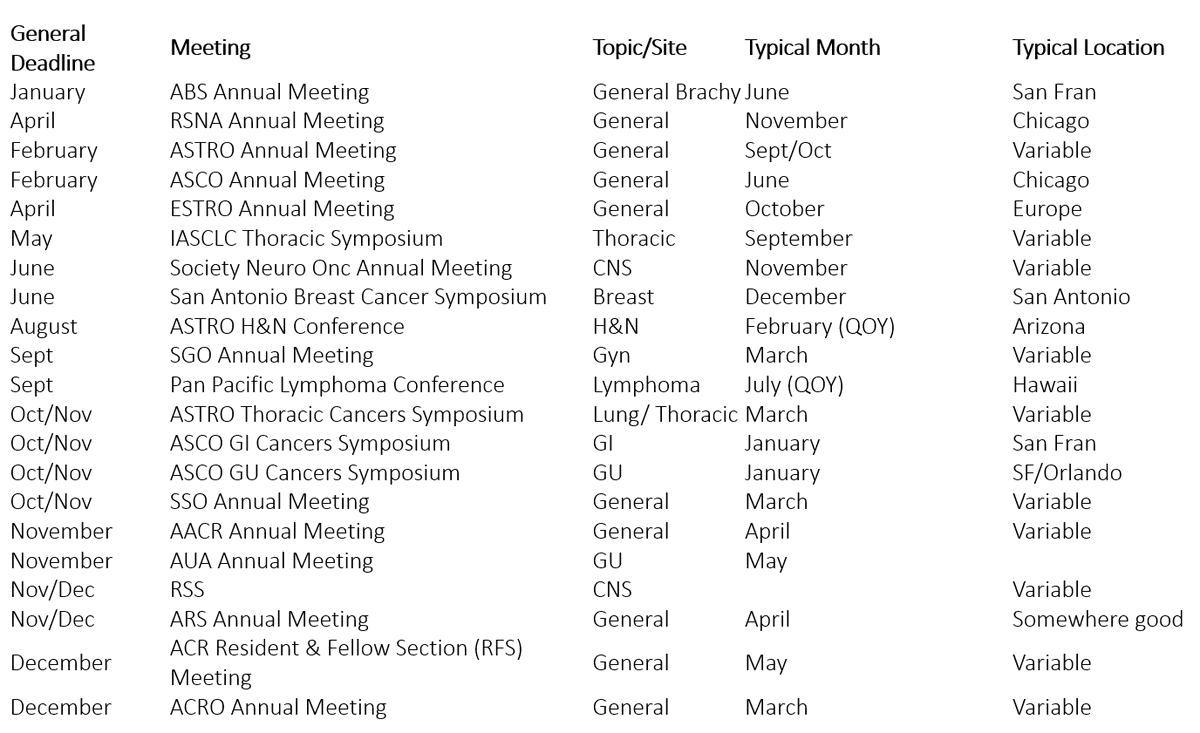
Ultimately, the published manuscript will be more important than an abstract/meeting.
10. When the time is right, share your data w international team working on same question.
Manuscripts are often rejected bc it is single institution, limited data set. If you join a larger group, the work will go farther.
Drop your insecurities.
Manuscripts are often rejected bc it is single institution, limited data set. If you join a larger group, the work will go farther.
Drop your insecurities.
eg, look at amazing work done by @AmarUKishan @DrSpratticus
marcap.one
All done through collaboration w @NRGonc @ICR_London @TROGfightcancer @EORTC
marcap.one
All done through collaboration w @NRGonc @ICR_London @TROGfightcancer @EORTC
OK, your manuscript has been submitted and resubmitted. You've gotten a lot of rejections (my avg is ~3-5 / paper).
Finally, it is accepted.
You're getting a proof. What next?


Finally, it is accepted.
You're getting a proof. What next?



The proof is the final pre-published version of your article. It's the last time you get to make changes.
You should email the proof to all coauthors ASAP and ask for edits.


You should email the proof to all coauthors ASAP and ask for edits.



Some journals like @JAMAOnc @TheLancetOncol @NatRevUrol @NatureComms @JNCCN have awesome editorial team that checks all the text, numbers, references.
Here is @JNCCN for our article.

Here is @JNCCN for our article.
https://twitter.com/nicholaszaorsky/status/1364309270028812294

Other journals are not as meticulous and could make changes that negatively affect the quality of your work, eg uploading low quality figures, although you had provided high quality rasters and the vectors.
On the proof, double check the funding, support, potential conflict of interest.
I am always thankful for @ACS_Research @AmericanCancer @NIH @NIH_LRP support for our research.
I am always thankful for @ACS_Research @AmericanCancer @NIH @NIH_LRP support for our research.
The next part of this thread will be specific to different parts of the writing process and people involved, so let's break it into subthreads.
Advice for mentees who want to publish a manuscript:
https://twitter.com/NicholasZaorsky/status/1480270492967874564
@AlyssaScott563 had a first author @JAMANetworkOpen paper as a second year medical student. Great work!
@PennStHershey
@PennStHershey
https://twitter.com/NicholasZaorsky/status/1333908837380857856
• • •
Missing some Tweet in this thread? You can try to
force a refresh






























